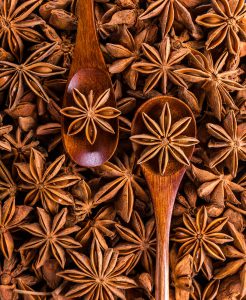Whether you’re a seasoned chef or a do-it-for-fun home cook, we all know that keeping a well stocked spice cabinet is a great way to elevate the flavors of the dishes we cook. Spices are different from herbs because spices are made from a plant’s dried roots, bark, or stem, while herbs are the plant’s dried or fresh leaves. Before you decide to toss or keep the spice jar that has been sitting in the back of your cabinet for as long as you can remember, it may have other uses besides just seasoning your food. There are a number of way to reuse old spices and limit your waste. Spices have many health benefits and specific spices such as turmeric, rosemary, sage, and cinnamon have been proven to have anti-inflammatory and antibacterial properties.
Spices don’t go bad in a way that will make you sick, however they will lose their potent smell and flavor over time. Many different spices offer a different shelf life ranging from two to four years. The best way to tell if spices have gone bad is by color and smell. If either are diminished, it might be a bad idea to cook with them.
The Shelf Life of Spices
Shelf life, specifically for spices, means the length of time they are most aromatic and produce great flavor for cooking. When determining shelf life, important factors to consider are the type of spice, how it was processed, and how it is stored. Typically the less processed the seasoning is, the longer the shelf life will be. Some spices such as vanilla extract and salt have an indefinite shelf life. Most other spices have a shorter shelf life:
- Whole spices such as caraway seeds, peppercorn, mustard seeds, and cumin seeds can have a shelf life of three to four years.
- Ground spices such as cumin, ginger, cinnamon, paprika, and turmeric have a shelf life of two to three years.
- Dried and leafy herbs such as parsley, cilantro, oregano, basil, and rosemary have a shelf life of one to three years.
Whole spices have the longest shelf life because less of their surface area is exposed to air, light, and moisture which allows them to retain their flavor compounds and oils longer than ground spices. Consider buying spices that come whole with a built in grinder to increase the shelf life.
How to Tell When Your Spices Have Gone Bad
In the traditional sense, dried herbs and spices do not really “go bad.” Consuming a spice that has “gone bad” will most likely not make you sick. It simply means that the spice has lost most of its flavor and aroma. Check the best by date on the jars of your spices. It’s still generally safe to consume spices that are older than their best by date, however the flavor might not be the same.
If there is no expiration date on the jar, do a taste and smell test. If you notice that the smell is faint and the flavor is almost nonexistent it might be time to replace that jar. You can also tell a spice ise older just by looking at it. Old, oxidized spices will clump up, have a dusty color and lack the vibrancy they once had when you initially bought them. Can’t tell if it’s garlic or onion powder anymore? That means it’s probably time to toss it or repurpose it.
How to Reuse Old Spices
To limit your waste, there are ways to repurpose old spices for a better use. If you’d rather repurpose your spices than throw them in the trash, here are a few easy ideas for how to use your expired spices in a different application:
- Potpourri: Instead of buying expensive candles or spraying your home with an air freshener, consider making potpourri out of your old spices. Bring a pot of water to a boil and then add about one tablespoon of whatever spice you like best. Not only will your house smell amazing but the fragrance will last a long time.
- Handmade soap: This can be a fun craft to do at home. You can use almost any spice to make soap or use more than one. Some popular spices to use are cloves, cinnamon, sage, and ginger.
- Infused oil: Whether you use infused oil in your bath water or as part of an aromatherapy oil diffuser, you can create a concoction from old spices. To do this, select the spice you like the most and then let it soak in jojoba oil for about four to six weeks. Then it’s ready to enjoy in whichever way you please.
- Spice sachets: A great way to make drawers and rooms in your home smell better is by placing a sachet inside. Spice sachets are also ideal for deodorizing closets, a basement, and even the garage. You can use any combination of spices you’d like to as well!
How to Store Spices for Maximum Shelf Life
The best way to keep spices fresh for longer is to minimize their exposure to moisture, air, heat and light. This will help you reduce waste and save money on buying new products. It is recommended to keep spices in a cabinet or pantry instead of a counter so that they will be exposed to less elements and can remain fresher for longer. Do not keep spices near your stove as repeated heat can cause the spices to go bad quicker.
You also want to make sure that your spices are stored in tightly sealed containers like ceramic or glass. Plastic containers are also a popular choice but aren’t typically as airtight as ceramic or glass containers.
Loving Your Spices
The best way to avoid having to throw out your spices is to use them! Don’t be afraid to add some extra spices to a recipe you’re cooking. Spices add a lot of depth and flavor to our dishes, so try out new recipes and combinations to see what you like best!






